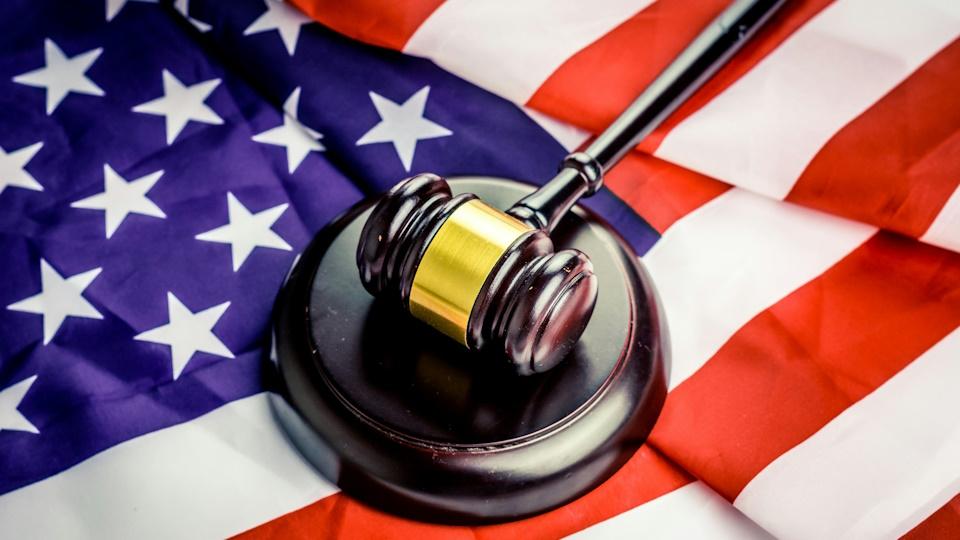Pharma news highlights: April

Ed Silverman
Pharmalot
(Continued from “Pharma news highlights: March”)
While there is never a lack of interesting info emerging from the pharmaceutical world, a few developments in April really did cause some chatter. Take the arrests of nearly a dozen people who pulled off a spectacular robbery of more than $70 million in prescription drugs from an Eli Lilly warehouse in Connecticut two years ago. The crime gained widespread attention because the thieves cut a hole in the roof of the building and, in the process, focused a spotlight on the growing problem of such heists, which drug makers have worked diligently to combat.
The theft resembled a bad movie plot. The mastermind was Amaury Villa, 37, a Cuban who lives in Florida and flew from Miami to Connecticut to case the warehouse in January 2010. He had an associate lease two tractor trailer trucks the next month, according to US prosecutors. After returning to Florida, he flew to New York two months later and, the day before the burglary, bought tools at a Home Depot store near La Guardia Airport.
 ,
"Take the arrests of nearly a dozen people who pulled off a spectacular robbery of more than $70 million in prescription drugs from an Eli Lilly warehouse in Connecticut two years ago."
 ,
Villa then drove to Windsor, Connecticut, and checked into a hotel on the night of March 13, 2010. He and his accomplices later drove to the warehouse, although they were picked up by Lilly surveillance video at one point. Nonetheless, they had the warehouse to themselves. For five hours, they used a forklift inside the building to load numerous boxes of Lilly drugs, including the Zyprexa antipsychotic, the Gemzar cancer med and the Prozac antidepressant. But Villa made a classic mistake – he touched a water bottle and left it in the building.
J&,J whistleblower lawsuit over Risperdal
The new Johnson &, Johnson CEO Alex Gorsky was also trying to avoid federal prosecutors. They filed a court motion seeking to compel him to provide a deposition in a widely publicized kickback case involving the Omnicare nursing home pharmacy, one of the largest such providers in the US. J&,J has denied claims made in a whistleblower lawsuit that charges Omnicare received kickbacks – in the form of rebates, educational grants and payments for marketing data from J&,J – so the Risperdal antipsychotic would be prescribed more often. The lawsuit also alleged J&,J’s Janssen unit hid the payments from Medicaid to avoid reporting a ‘best price’ that would have triggered rebates to the agency.
Prosecutors have been frustrated with the responses J&,J lawyers gave to questions about the relationship with Omnicare and the J&,J efforts to boost Risperdal market share. The antipsychotic was not approved for use in patients with dementia-related psychosis, according to the label, which now includes a warning that such patients are at an increased risk of death. So the feds want to quiz Gorsky about his dealings with Omnicare and his knowledge of how J&,J marketed Risperdal to the nursing home pharmacy, starting in the late 1990?s.
J&,J argues that Gorsky “has no reasonable connection to the subject matter of the government’s complaint and was not involved in the facts underlying this case”. But the feds point out that he was the go-to guy when it came to Omnicare and Risperdal, and no one else possesses the same level of knowledge. Why? From October 1998 to October 2001, Gorsky was Janssen’s VP of marketing, and from October 2001 to early 2003 he was the Janssen president. During that time, he was responsible for selling Risperdal, and Omnicare was the biggest Risperdal customer. Moreover, Gorsky instituted a Janssen compliance program for regulatory and legal issues. He also regularly received monthly reports on J&,J’s Long Term Care Group, including reports which had details about Omnicare efforts to promote Risperdal prescribing. And Gorsky met repeatedly with senior Omnicare execs to discuss those efforts.
Novartis manufacturing problems
Over the past few months, Novartis has struggled with numerous problems at several manufacturing plants. In particular, a facility in Nebraska suffered embarrassing gaffes involving over-the-counter meds and animal health drugs. The FDA sent a warning letter last fall for “significant violations” at two other US plants in Colorado and North Carolina. And a Sandoz plant in Quebec, Canada, has halted some production. However, the drug maker is having an equally rough time in Europe, where shortages are reported in several countries, including Austria, Belgium, Bulgaria, Czech Republic, Germany, Spain, France, Hungary, Ireland, Italy, Netherlands, Poland, Portugal, Romania, Slovenia and Slovakia.
 ,
"As a result of all these problems, Novartis CEO Joe Jimenez recently named managers to clean up the various messes around the globe."
 ,
Novartis explains the shortages are due to multiple manufacturer shortages at several companies around the world. But the problem has been exacerbated by ongoing problems at one of its facilities in Austria, which is home to a generic injectables business, the former Ebewe, which Novartis purchased for $1.3 billion three years ago. Since then, the Sandoz unit has been “constantly upgrading”. At the time of the acquisition, Sandoz emphasized that a key priority was to capitalize on the “expertise in injectables manufacturing” demonstrated by Ebewe.
A Novartis spokesman acknowledges that work is under way, but declined to be specific about the problems. “In order to meet the highest quality standards, Sandoz is strengthening operations at its Austrian site by implementing equipment and process upgrades,” he writes to us. “This has required us to temporarily slow down production at the site, thereby limiting our ability to fully meet our supply commitments.” The problems at the Austrian plant, however, are not just causing shortages. Last month, the Lebanese Health Ministry banned one Sandoz drug, Carboplatin, due to several instances in which degeneration was detected 15 months or more after it was manufactured.
As a result of all these problems, Novartis CEO Joe Jimenez recently named managers to clean up the various messes around the globe. Ivan Moller was named head of GMP manufacturing and quality program management for a group-level effort to handle remediation activities. And Didier Colombeen was named head of global manufacturing and supply, which involves running all aspects of manufacturing operations and the supply chain. She succeeds Cath Malseed, who left Novartis. This was the second major change in execs since the plant problems began.
Pfizer Celebrex payout
Less than a month before a potentially embarrassing and costly trial was to begin, Pfizer agreed to pay $450 million to Brigham Young University and endow a chair in the name of Daniel Simmons, a professor who claimed the drug maker wrongfully cheated him out of money and credit for research that led to the discovery and commercialization of the best-selling Celebrex painkiller. Simmons maintained he discovered the Cox-2 enzyme in 1991 that evolved into Celebrex and that the university signed a research agreement with Monsanto, which later became part of Pfizer. However, Simmons and BYU charged the deal was “fraudulently” ended without compensation, a former Monsanto chief scientific officer took credit for the discovery and that Simmons’ work was used as a roadmap for developing the painkiller.
 ,
"Less than a month before a potentially embarrassing and costly trial was to begin, Pfizer agreed to pay $450 million..."
 ,
The trial was expected to be closely watched, in part because the proceedings may have pulled back the curtain on the dealings between the pharmaceutical industry and academia, which are increasing their ties as drug makers turn to universities for help in replenishing their pipelines. For instance, BYU and Simmons charged that Monsanto secretly tested a compound using confidential Simmons’ research, which they alleged was a breach of their agreement.
There was also the possibility of a financial impact on Pfizer, since BYU and Simmons sought sizeable damages. Celebrex has generated billions of dollars in sales over the years for Pfizer which was prompted, in part, to purchase Pharmacia in order to obtain the rights to the drug (Pharmacia merged with Monsanto.) Last year, Celebrex revenue exceeded $2.5 billion and the pill notched $634 million in first quarter revenue this year. In other words, Pfizer paid the equivalent of roughly 70 days of recent Celebrex sales to make the lawsuit go away. Not counting legal fees, of course.
The next ‘Pharma news highlights’ can be viewed here.
About the author:
Ed Silverman is a prize-winning journalist who has covered the pharmaceutical industry for the past 16 years. In addition to editing Pharmalot, he is currently an editor-at-large for Med Ad News and R&,D Directions.
Previously, he was a bureau chief for The Pink Sheet, the venerable industry newsletter, and a contributor to its sister publication, In Vivo magazine. Before that, Silverman worked as a business writer for The Star-Ledger of New Jersey, one of the nation’s largest daily newspapers, where he conceived and launched Pharmalot. During his 13-year tenure, he closely followed a variety of topics of concern to those who work for, and with, drug makers – drug development, mergers and acquisitions, regulatory oversight, safety and pricing controversies, and marketing issues.
Prior to joining The Star-Ledger, Silverman spent six years at New York Newsday and previously worked at Investor’s Business Daily, among other newspapers. He has a master’s degree in journalism from New York University and a bachelor’s degree in accounting from Binghamton University. Tethered to his laptop and Blackberry, Silverman lives in suburban New Jersey with his wife, three children, a sizeable Labrador retriever and a sneaky beagle.
What was your top pharma story from April?












